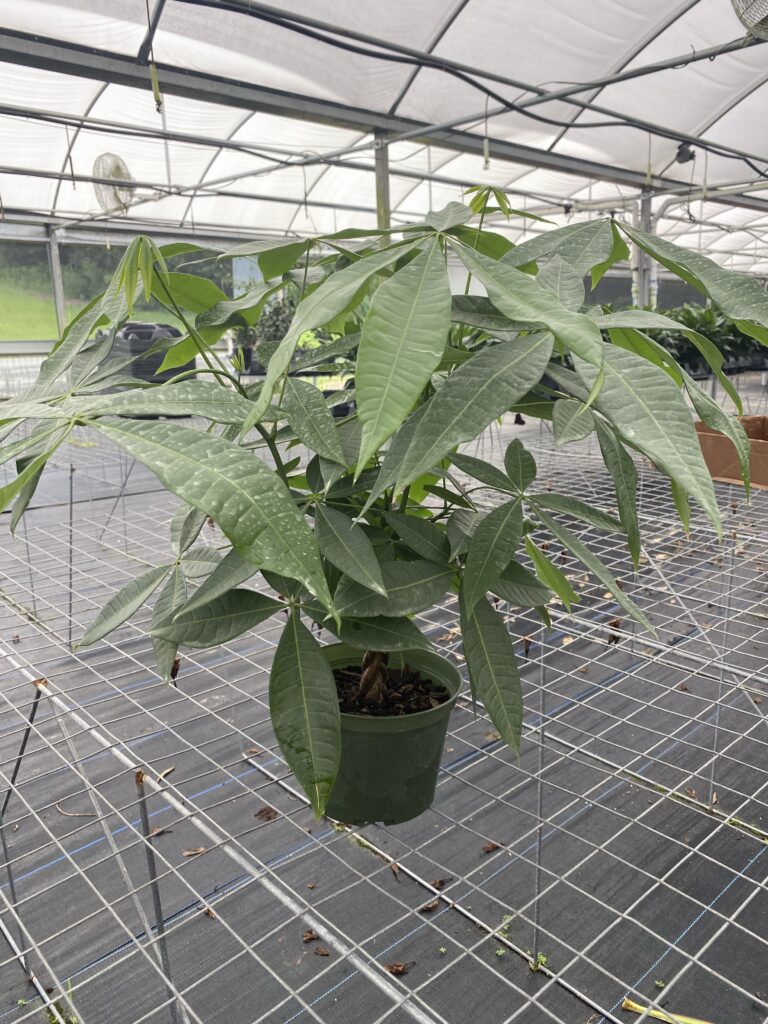
Money tree plants, or Pachira aquatica, are popular houseplants known for their distinctive braided trunks and lush green leaves. They’re often associated with good fortune and prosperity, especially in Feng Shui.
We offer Money Tree Braids in 4″, 6″, and 10″ sizes.
Here’s a comprehensive guide to Money Tree Plant care
Appearance
Growth: It can grow to 3-6 feet tall indoors, with a similar spread.
Leaves: Money trees have glossy, palmate leaves with five to seven leaflets radiating from a central point. The leaves are typically a rich, deep green.
Trunk: The plant is often sold with a braided or twisted trunk, which is a unique feature and adds to its ornamental appeal.
Care Tips
Light: Prefers bright, indirect light. It can tolerate lower light conditions but will grow more slowly and may become leggy. Avoid direct sunlight, which can scorch the leaves.
Watering: Keep the soil moderately moist. Water when the top 1-2 inches of soil feel dry. Overwatering can lead to root rot, so ensure the plant’s pot has good drainage. During winter, reduce watering as the plant’s growth slows.
Soil: Use a well-draining potting mix. A standard houseplant mix or one designed for cacti and succulents works well. Adding perlite or sand can improve drainage.
Temperature: Thrives in temperatures between 65-75°F. It’s sensitive to cold and should be kept away from drafts and temperatures below 50°F.
Humidity: Money trees are adaptable to average indoor humidity. If the air is very dry, especially in winter, occasional misting or placing the plant on a humidity tray can be beneficial.
Fertilizing: Feed with a balanced, water-soluble fertilizer every 1-2 months during the growing season (spring and summer). Reduce feeding in fall and winter.
Repotting: Repot every 2-3 years or when the plant becomes root-bound. Spring is the best time for repotting. Choose a pot that is 1-2 inches larger in diameter than the current one.
Pruning: Prune to remove any dead or damaged leaves. You can also trim back leggy growth to encourage a fuller appearance.
Pests and Problems: Money trees are relatively pest-resistant but can occasionally suffer from mealybugs, spider mites, or scale. Monitor the plant regularly for pests. Leaf problems like yellowing can be a sign of overwatering, poor drainage, or a lack of nutrients.
Fun Fact: Feng Shui and Symbolism
In Feng Shui, the money tree is believed to bring good luck and prosperity, making it a popular choice for homes and offices. The braided trunk is thought to symbolize harmony and unity.
If you have any questions, or are interested in purchasing, feel free to come by the nursery or give us a call at (352)735-8350. Our inventory is also available to see online.
